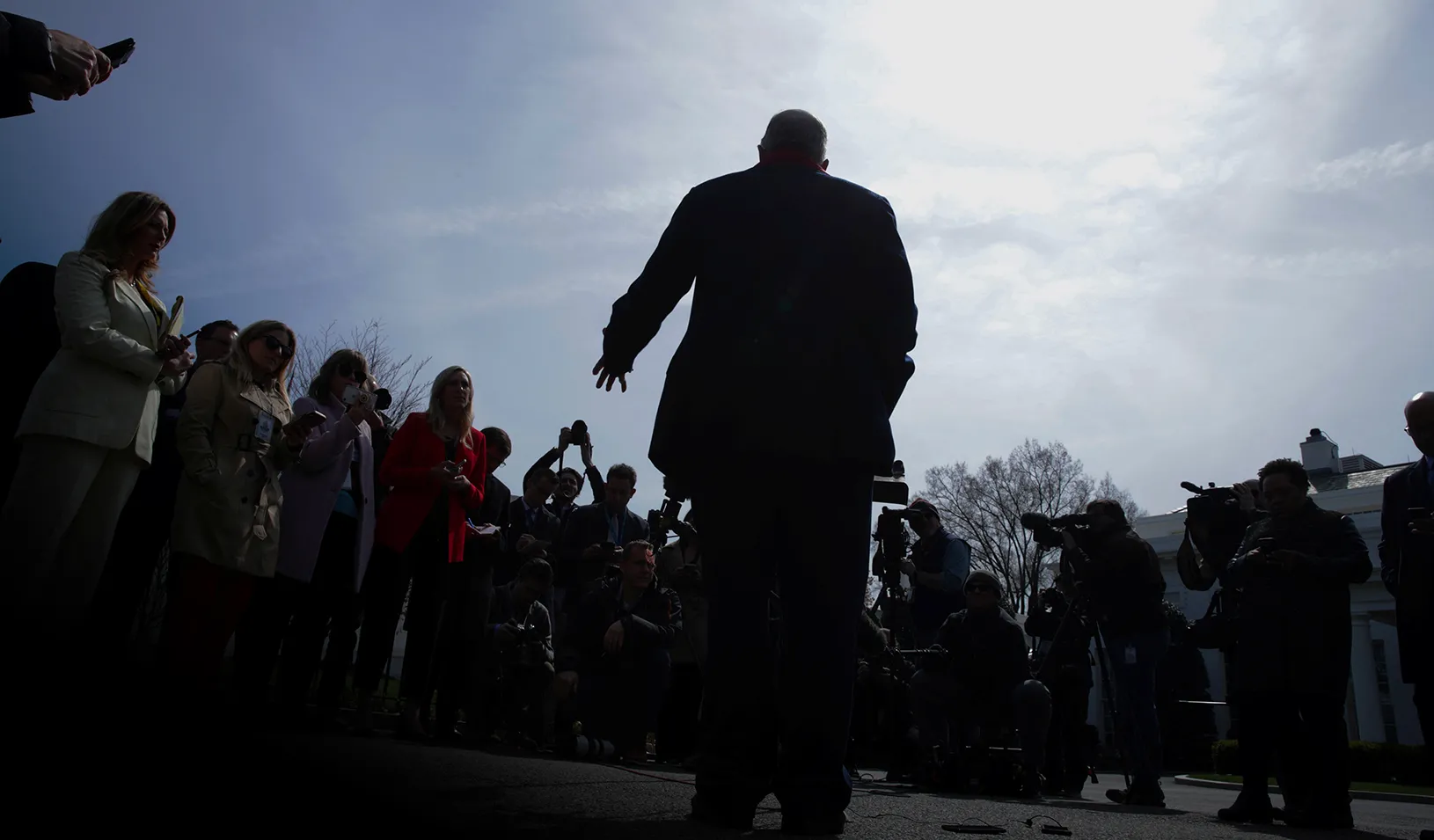Responding to Crisis: A Spotlight on Your Organization
Rather than be derailed by crises, seize the opportunity to articulate what you stand for — at a time when everyone is listening.
April 16, 2020
During a crisis, leaders have a heightened opportunity to reach a broader audience with their message. | Reuters/Jonathan Ernst
A crisis, especially one as unforeseen and devastating as the COVID-19 global pandemic, can rock the foundations of an organization. Yet within every crisis lies an opportunity to shape what your organization will become — and how it will be perceived as it emerges from such a challenging time.
In a recent Stanford Graduate School of Business Executive Education online course, political economy professor Steven Callander outlined how leaders can reframe their thinking to make the most out of the challenges presented by crises. “Our objective is to handle a crisis as a management problem,” he explains. Rather than being caught like a deer in the headlights, “We want to thrive in the spotlight.”
Defining a Crisis
A leader of any organization inevitably has to navigate a crisis at some point, Callander says. No industry is immune. It’s also likely, given the interdependent nature of the current global economy, that every organization will someday feel the impact of a crisis that initially seems far away.
On a basic level, then, how does an executive recognize or define a crisis? First, Callander points out, it’s a non-routine event. Organizational success is typically built around effective, efficient routines, which is in part why crises are difficult to grapple with. Second, because a crisis can make a sudden and significant impact on an organization, it demands an immediate response. If a crisis is not attended to in a timely manner, it can cause substantial damage to the organization.
Leveraging an Organization’s Reputation
Reputation is a concept that people inherently understand on a personal level because they are constantly trying to gauge and manage how others perceive them. As it turns out, corporate reputations are not that different, Callander says. People see businesses as trustworthy, trendy, or unethical in the same way that they view a person.
A number of studies examining corporate reputation have found that its various elements can be distilled to two words: competence and empathy. Competence is the extent to which people perceive that an organization is good at what it does. Is it reliable? Are the products it produces high quality? Empathy, by contrast, is a fuzzier term: It relates to how compassionate people perceive an organization to be. Does it care about and support its stakeholders? Can it be trusted?
Callander notes that every organization has a reputation that can be plotted along these two axes, and there are general industry trends that will affect where an organization lands. For example, a large tech company might score higher on competence but lower on empathy, whereas the inverse is more likely to be true for a small nonprofit. The goal for any business, of course, is to score high in both dimensions.
Corporate reputation becomes even more pronounced during a crisis, he says. If an organization benefits from a strong reputation, it can use that as a crisis management tool to marshal resources and muscle through tough times.
Crisis as Opportunity
In his frequent interactions with leaders of organizations, Callander has noticed that many of them share the same complaint: “They have to repeat themselves over and over again.” It comes with the territory, he says. “Leaders are the stewards of an organization’s mission, its reputation, and its culture. And to get that message out and to have it sink in requires a lot of repetition.”
In a crisis, however, leaders have a heightened opportunity to get their message out — and to reach an even broader audience. Under normal conditions, Callander explains, only the most invested stakeholders are tuned in to what’s happening within an organization. When a crisis hits, however, it’s as if a spotlight’s been turned on, and suddenly everyone is paying attention and looking to the leader to make sense out of what’s happened — and offer a path forward.
“This attention presents both threats and opportunities,” he says. The threat is finding yourself in a vulnerable position: unsure of how to respond, and struggling under the pressure of increased demands from stakeholders. At the same time, the crisis opens an opportunity in the form of a new platform for leaders to declare what an organization cares about — and because people’s attention has become laser focused, they only need to say it once.
“A single crisis under the glare of the spotlight is more effective at getting your message out about who you are and what your organization stands for than a hundred meetings or a thousand speeches,” Callander says.
Acting Under Pressure
In the aftermath of a crisis, the spotlight will dim and people’s attention will shift. Nonetheless, they will remember how an organization responded during the crisis, and that response will shape its reputation well into the future. Therefore, in determining how to react, Callander says, it’s important to bear in mind that short-term solutions — those that might reduce direct costs but ultimately shortchange stakeholders — may seem attractive, but are in reality “no more than fool’s gold.” If a decision harms stakeholders unfairly, the negative impact on an organization’s reputation will register for a long time and the damage will far outweigh any short-term gains.
The pressure to respond to a crisis is real, and options may seem limited, but Callander cautions that “the choices you make and the way you handle yourself signals more information to those watching than what you do when the pressure is off.” It may be easier to make decisions when times are good, but in the face of a difficult challenge, people will take heed of a corporation’s actions and remember them for longer. All of which means that leaders faced with a crisis should be prepared to make decisions that will define their organizations for the long term.
For media inquiries, visit the Newsroom.
Explore More

Why Investors Throw Money at Eccentric CEOs

Unlocking the “Iron Cage” of Corporate Conformity



